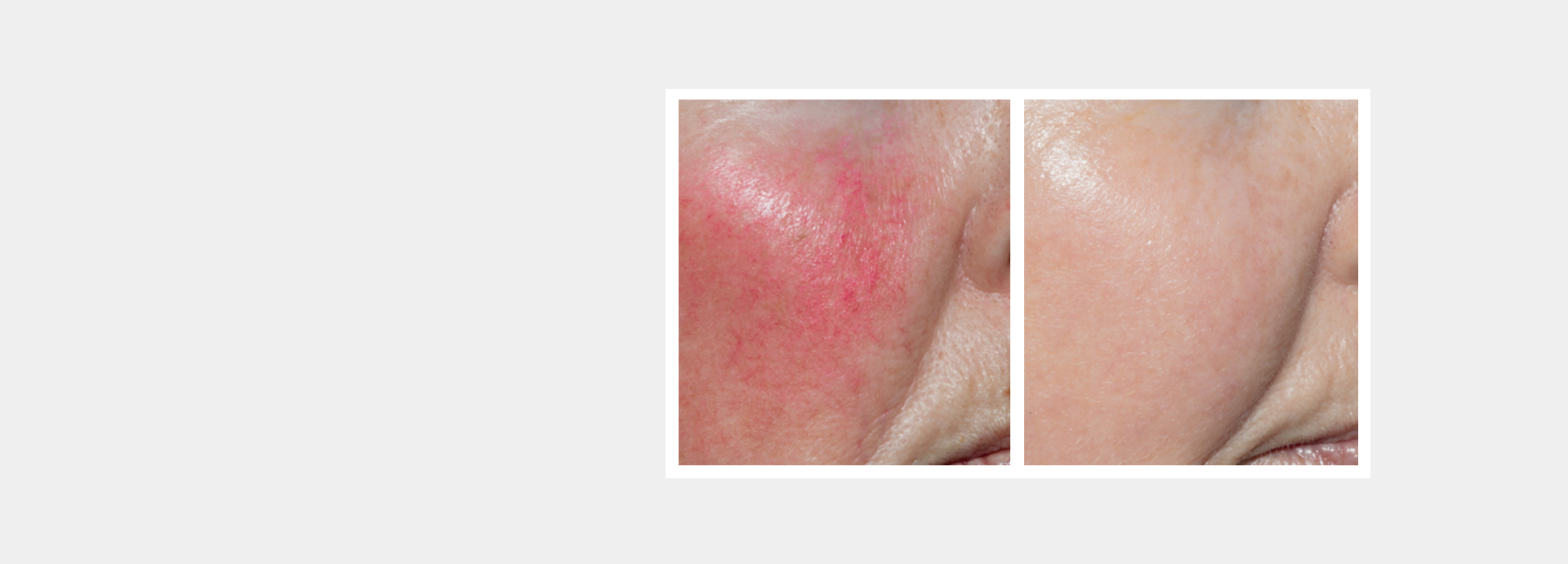The most common treatments are for superficial veins in the face, but other vascular lesions on the face or body can successfully treated. Treatments are most efficient in patients with light skin who are not suntanned at the time of the treatment. If your skin is less tanned, the contrast between the blood vessels and background colour of the skin is greater, making treatment easier. However, we have pre-programmed settings for different skin types that deliver the correct energy output for your complexion.
1. Rosacea – Redness and swelling of the face. Usually accompanied by acne or pustules
2. Poikiloderma of Civatte – “brown perfume stains”. A combination of telangiectasia, irregular pigmentation and changes to the skin. Mainly on the neck and chest area
3. Sun Spots/ age spots/ liver spots caused by unprotected sun exposure.
4. Red or purple stretch marks
5. Epidermal Melasma – hyper-pigmentation of the face
6. Café au lait macules – light tan to brown flat lesions containing a lot of melanin
7. Cherry angiomas/Campbell de Morgan spots/ senile haemangioma – bright red to bluish spots mainly appearing on the trunk of patients above the age of 30
8. Dark circles under the eye – blue/black discolouration under the eyes
9. Diffuse redness – a red blush especially on the cheek area
10. Facial Telangiectasia (thread veins)
11. Hemosiderin – rust like marks loosely following the pattern of a vessel previously treated
12. Venous Lakes – blue or purple, soft, raised skin
13. Do I need to take special precautions before and after treatment?
14. It is important to avoid tanning (sun, solarium or self-tanning products) before and during the treatment period otherwise your tanned skin will absorb more light which makes the treatment less effective and less comfortable
– It is also a good idea to avoid smoking 4 hours prior to treatment. Generally, no special care is necessary after treatment, but people with sensitive skin may benefit from applying a cold compress (a cold damp cloth) to the area immediately after treatment or from using an ointment prescribed by the doctor
– After treatment, you should avoid sun exposure for 30 days, even if there is no sign of inflammation in the treated area
15. Does the treatment hurt?
16. No anaesthetics are required, many patients describe the treatment as being like a snap from a rubber band followed by a sensation similar to the feeling of gentle sunburn
![]()





